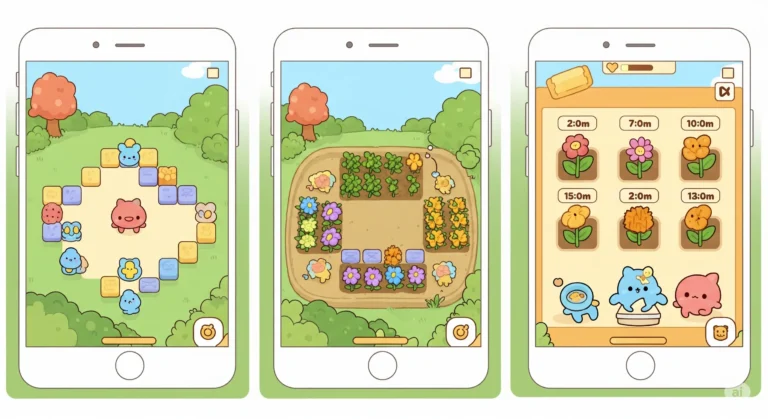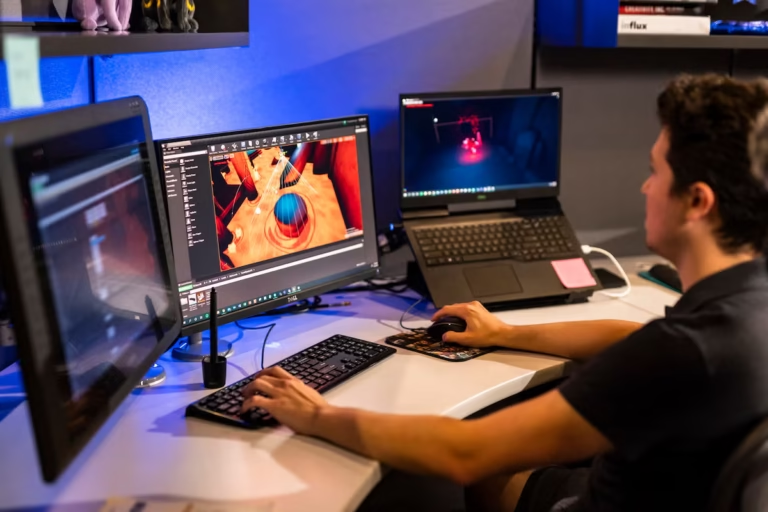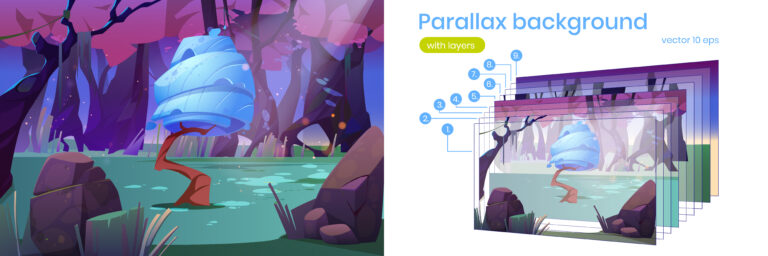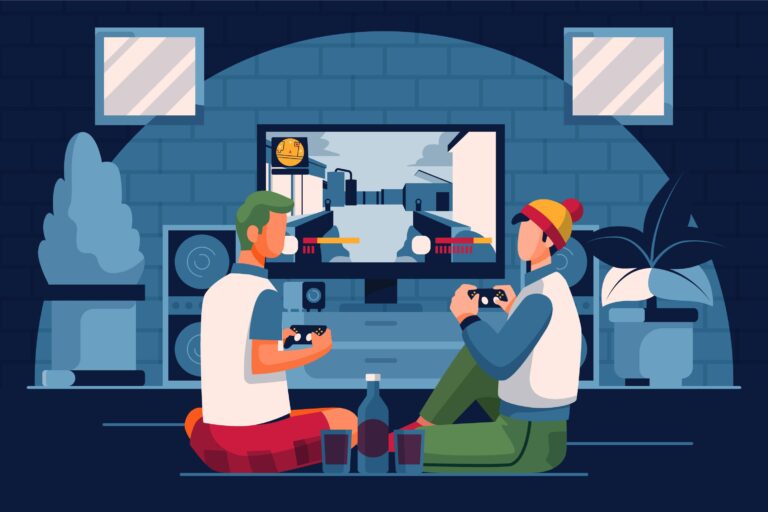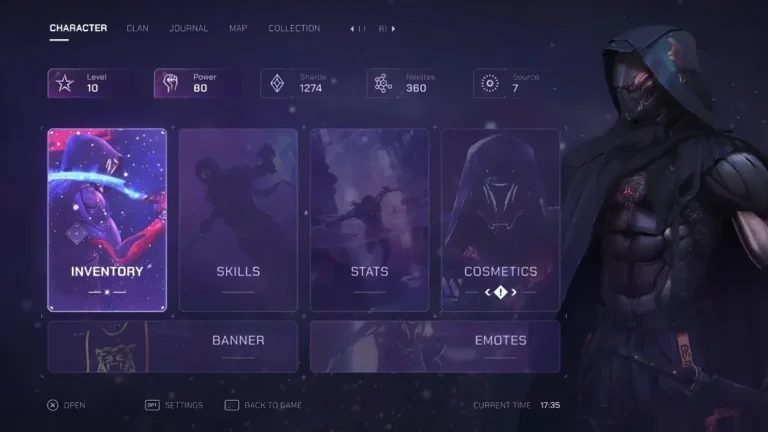Concept art plays a critical role in the development process by visualizing ideas and setting the artistic direction for a project. It helps to establish the style, mood, and overall aesthetic, serving as a reference point for the entire team. For both game creators and players, concept art is the kind of spark that lights a game’s imagination on fire. Consider some of your most recognizable video game landscapes or characters. Most likely, a talented concept artist created the original drawings for these characters long before any code was written or 3D models were created.
From Cloud Strife’s instantly recognizable buster sword and spikey hairdo to the breathtaking vistas of Hyrule Field, the art of visualization through concepts has birthed some of gaming’s most memorable creations. While their finalized in-game appearances get the spotlight, the unsung heroics of concept art laid the vital foundations.
At its core, concept art shapes the entire visual identity and artistic direction of a game project from the very beginning. It’s the conceptual blueprint that all stakeholders – artists, designers, programmers, and even writers – must rally behind to turn that shared vision into an immersive interactive experience. Because let’s face it, if the art directors and creative leads can’t align on a cohesive look and feel, the game’s aesthetics run the risk of feeling disjointed and lackluster.
In this post, we talk about the critical role and practical uses of concept art in artistic projects and how to get the most out of them, but if you’re here to learn about the concept art creation process or the scope of work and time required to create concept art, be sure to check out posts on those subjects.


Need Game Art Services?
Visit our Game Art Service page to see how we can help bring your ideas to life!
Establishing Visual Identity and Artistic Direction
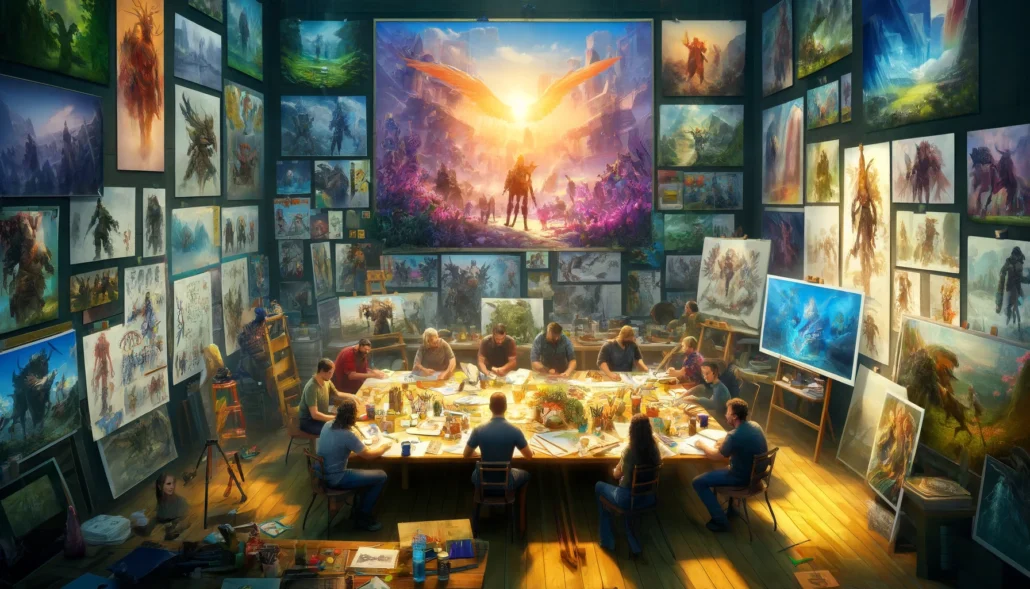
This is a crucial exploratory phase where the art directors and concept artists noodle around, brainstorming and experimenting until they’ve crystallized an overarching aesthetic direction fitting for the game’s genre, narrative, and gameplay pillars. The resulting concept paintings, sketches, and material studies essentially become the official branding guidelines that the entire art team must adhere to.
I remember for one project I consulted on – a gritty, post-apocalyptic survival game – we spent weeks just iterating on concepts for the main character alone. Rugged and weathered but still plausibly athletic? Vintage military fatigues or fully customized hodge-podge gear? We probably went through a dozen variants before striking the right balance of badass and relatable.
Once that key piece was finalized, however, it locked in major signifiers like color palettes, texturing styles, and even body proportions that carried through to designing all other friendly and hostile human NPC. From there, the environment team’s concepts for the decaying cityscape matched the same tonal identity cues – dried-out vegetation juxtaposed against crumbling urban decay, harsh shadows intermixed with dusty volumetric lighting, et cetera.
Deviating too far from that singular cohesive vision could potentially break the audience’s immersion and make assets feel out of place. Concept art enforces aesthetic discipline, ensuring a unified look across all the art a player will see and experience.
Facilitating Collaboration and Communication
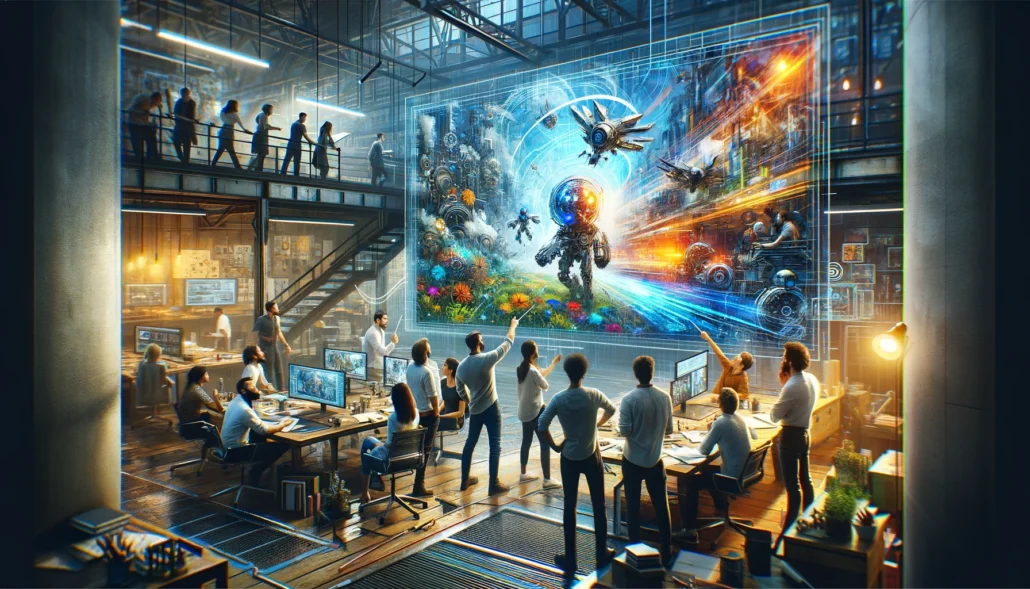
Game development is a massively collaborative process involving multidisciplinary teams – artists, designers, programmers, producers, and more. Each discipline speaks a somewhat different visual language, making clear communication absolutely vital to prevent misunderstandings and costly overhead. This is where concept art acts as a universal translator of sorts.
Detailed, high-quality concept pieces remove ambiguity by providing a realistic reference point that everyone can easily understand, regardless of their role or background. Instead of trading esoteric design docs or pages of text descriptions, the entire team can simply look at the concepts and immediately grasp the intended vision. It’s a shared visual vocabulary that aligns everyone.
For example, let’s say the writer describes a new location as “an ancient dwarven mining colony, carved into the roots of a petrified forest.” Pretty evocative phrasing, but interpretations could vary wildly. Does “petrified” mean literally mineralized trees? What architectural styles typify dwarven design? How large or small should the space feel? With a striking concept illustration, however, all those potential inconsistencies get clarified at a single glance.
Ever tried to describe a highly unique, complex character or creature design? It’s extremely frustrating to generate such concepts using only words, but when an affordable concept sketch incorporates the various nuances into sharp focus – the unique anatomical features, color patterns or silhouettes, garment draping, or additional accouterments – precise as the artist imagined them within their own minds.
Creative stakeholders would have no reliable common visual language through which to exchange ideas efficiently without concept art, and the end result would be an endless morass of frustrating exchanges. Miscommunications and costly revisions become exponentially more prevalent. Clear, impactful concepts eliminate these dangers. They keep everyone moving in the same direction, fully purchasing into the collective artistic vision.
Exploring and Iterating on Ideas
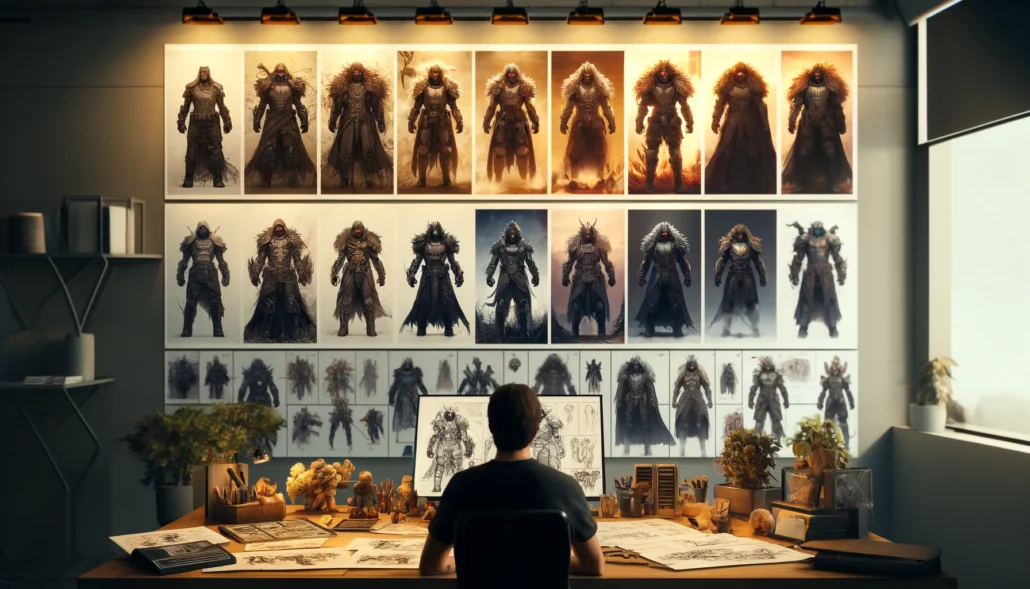
While building out production assets often requires significant time and staffing resources quickly, concept designers have the opportunity to experiment with rapid sketches and paintings very affordably and for a wide berth of ideas. They can push post-it notes to their extremes without worry, come up with off-the-wall ideas, and explore the same concept in thousands of alternates until they finally land on something both unique and commercially viable. In my own experience, I’ve seen many projects have overhauls several times over due to wildly different batches of concept exploration.
It may be that the sci-fi military shooter concepts felt too generic, so the team retools for a diesel-punk aesthetic instead. Or maybe that gritty urban fantasy approach isn’t resonating, prompting a shift towards a more stylized, vibrant anime-inspired take.
Even for designs that don’t end up as finals, the exploratory process still yields dividends by probing new creative frontiers. It stretches an artist’s imagination in ways that can directly influence future work. And who knows, those abandoned concepts may prove inspiring for another project down the road!
The true magic happens when a set of concepts just clicks into place though. That sparks an electrifying cycle of energized iteration as both artists and developers begin rapidly riffing off each other to push the creative potential even further.
Marketing and Building Hype
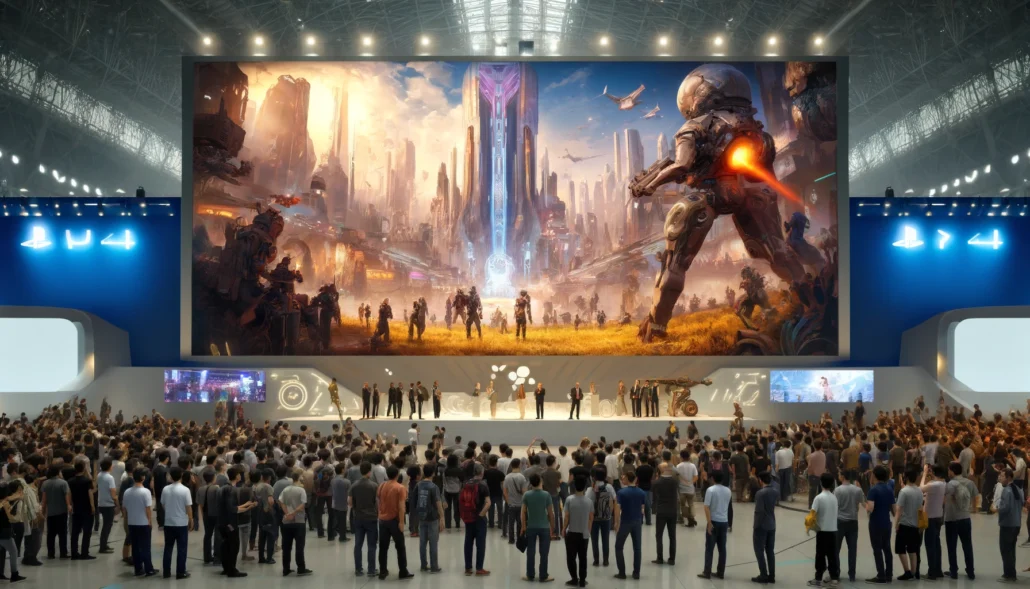
While concept art’s primary function is guiding and aligning a game’s production, it also plays a vital marketing role in captivating audiences and building hype. Think about how many times you’ve been instantly hooked by an incredible piece of concept art revealed at a trade show or on social media.
Game publishers and developers strategically leverage striking concept pieces as premium promotional materials for this very reason. An awe-inspiring illustration of a hulking mecha warrior or alien vistas can single-handedly drive mainstream buzz and get people furiously speculating about an unannounced project.
Jaw-dropping concept art has the power to stir the imaginations of millions of potential players before a single gameplay trailer even exists. It plants the creative seed for audience excitement by teasing all the eye-catching visuals and subject matter they have to look forward to.
Heck, how many games have you bought or added to your wish list based solely on the strength of the concept art marketing push? I know I’ve fallen for that tantalizing trap many times before!
Beyond servicing the hype machine, top-tier concept art outsourcing services are also pivotal for attracting triple-A talent to work on a game. It showcases artistic ambition while giving prospective developers a clear, visually compelling pitch for the project’s creative potential right out of the gate.
From a pure portfolio standpoint, strong concept pieces are absolutely essential for artists looking to get hired. Crisp illustrations and sketches are among the most sought-after samples that studios meticulously scrutinize during the recruitment process.
Whether public-facing or behind-the-scenes, concept art has become an indispensable asset for video games to market themselves impactfully in our radically visual culture. It’s simply one of the most powerful mediums for igniting anticipation and interest before players even pick up a controller.
Leveraging Concepts as Invaluable Reference Guides
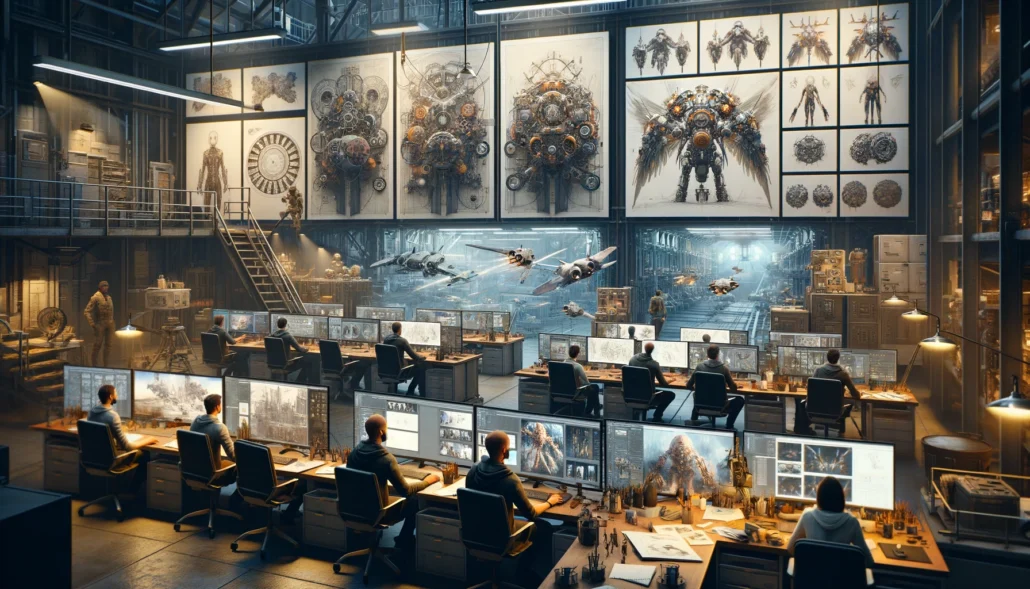
Concept art may be an exhilarating and incendiary creative spindle, but it also acts as an invaluable referencing guide to convert one’s inspired concept into a production-ready vision of the same quality and precision. It isn’t only about looking gorgeous – this is a labor-intensive assemblage of finely shaped guidebooks. For character artists tasked with transforming 2D designs into believable 3D models and animations, concept illustrations are their Northstar.
Proportions, physicality, gear/clothing specifics, defining silhouettes – all the crucial nuances get meticulously studied and translated from the pencil sketches and painted renderings. Rather than subjectively winging character details, these references ensure the authentic realization of the original intended personality. The same referential reverence applies to environment modeling, texturing, and lighting. Concept paintings put every architectural flourish, vegetation style, surface wear pattern, dramatic lighting composition, and more into a hyper-focused visual context for 3D reconstruction.
They provide an explicit layout map that removes all ambiguity about realizing the artistic concepts in-engine. I always strove to achieve fanatical fidelity to environment concept artwork on my projects. If the painting portrayed an ornately embellished steel gate with rusted Art Nouveau floral emblems, you’d better believe I obsessively cross-referenced and matched every curlicue, oxidation pattern, and decorative detail in the 3D model.
Cutting those corners would invariably dilute the power and conviction of that original artistic vision. With detailed concept art on hand, there’s zero need for guesswork about how characters, environments, or other art assets should ultimately look and feel. These pieces preserve crucial data like color keys, value compositions, ambiance, and material fidelity that the entire team upholds to ensure cohesive, immersive visuals. They eliminate timely rework by keeping everyone’s interpretations aligned and accurate. The rest of the art crew referred to these over and over during production; whether modeled, animated, or visual effects or lighted, everyone depended on the sacrosanct pictures.
Conclusion
Concept art is the spark that ignites a game universe into existence, the inspiration that keeps its production engine firing on all cylinders, and the throughline that binds an entire development team’s artistic efforts together.
Those initial visionary concepts serve as the conceptual seed and road map for every aesthetic aspect players will ultimately see and experience. They establish the tonal guidelines, stylistic conventions, and unified vision that blossoms into cohesive art direction across all areas – characters, environments, UI, marketing, you name it. Without those anchoring concept visuals, a game world runs the very real risk of feeling disjointed, erratic, and lacking a clear, confident sense of identity.
But concept art’s indispensable value extends well beyond simply defining the artistic road map. It facilitates crucial creative collaboration by providing a common visual language that bypasses ambiguous texts or descriptions. Need to convey an unconventional creature design? An evocative environment setup? Complex architectural styles? Nothing aligns a cross-disciplinary team quite like a vividly illustrated concept that immediately clicks everyone’s vision into sync.
It’s this universally understood creative medium that empowers artists to freely explore, experiment, and iterate on new visual ideas with relatively low risk. Instead of committing straight to expensive production assets, designers can affordably brainstorm fresh aesthetic directions through rapid concept drawings and paintings. Finding resonant creative gems among these exploratory efforts helps forge those tantalizing “wow” moments that captivate player imaginations.
Not just for internal development, skillfully executed concept pieces are also absolutely pivotal for building hype, driving marketing sizzle, and luring top industry talent to a project. An incredible piece of promo art can single-handedly ignite mass mainstream buzz and anticipation around even an unannounced game. It’s visual creative wattage that instantaneously sells audience interest. These references ensure the highest degree of creative directional integrity with none of the gaps or inconsistencies that can arise from open interpretation.



